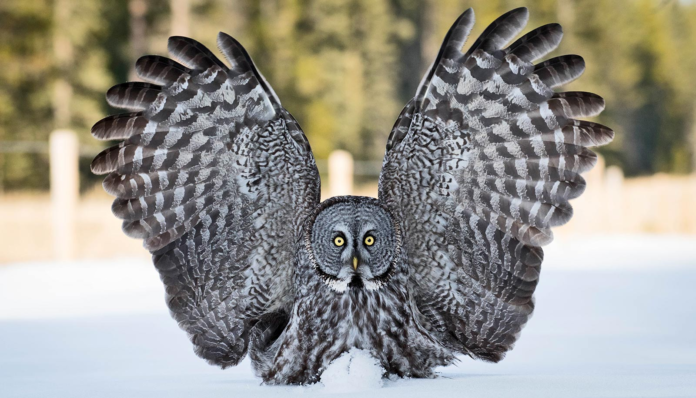A new study reveals new clues about the subtle but previously poorly understood evolutionary dance happening between temperatures and changes in the size of animal body parts.
The new research offers important insights about how animals, particularly birds, may adapt to the rapid rise in temperatures driven by global climate change.
For the study in Nature Communications, the researchers looked at nearly 7,000 species of terrestrial nonmigratory birds—which is nearly two-thirds of all bird species—and focused on how bird morphology has evolved along gradients in ambient temperature and other agents of selection.
Two widely accepted “rules” in biology indicate that as local temperatures change, animals are likely to adjust their heat transfer capabilities by changing the size of their bodies and extremities.
Biologist Carl Bergmann’s rule states that colder climates spawn bigger bodies because they help retain heat while smaller bodies help shed it. As a result, a polar bear is more than 2½ times as tall at the shoulder as a sun bear from equatorial regions.
Zoologist Joel Asaph Allen’s rule deals with extremities, such as limbs, ears, and beaks, stating that animals in colder climates tend to have smaller extremities because extremities tend to have more surface than volume and are uniquely suited to shed heat. For example, arctic hares have evolved short legs and ears, whereas desert jackrabbits have evolved very long legs and ears.
“The problem is that everything we know about ecology tells us that changing the size of bodies and extremities can be problematic,” says lead author Carlos Botero, an associate professor of integrative biology at the University of Texas at Austin.
For example, if body size decreases, birds may not be able to hunt the same food as their ancestors. Similarly, if the average size or shape of a bill changes, birds may become less efficient foragers or have trouble producing typical mating calls.
It is not surprising that many prior studies have failed to find evidence for these predictions and that these so-called biological rules are currently controversial. The new study could clarify that debate by showing that although the patterns that Bergmann and Allen predicted occur in the wild, the two separate mechanisms complement each other within avian lineages.
The current study’s researchers also wanted to figure out why a small number of bird families still follow the rules that most others appear to circumvent. They found that in many of those cases, the species involved had bumped up against some kind of natural constraint.
For example, owls have responded to temperature gradients primarily through body size adjustments such that the arctic great gray owl has a body nearly 2 feet long, whereas its relative, the Central American pygmy owl, which lives in the tropics, is only about 5 inches long. These birds, however, have highly specialized beaks that are almost the same size.
“When your hunting tactics depend on the size and shape of your beak, that structure is the last thing you want to change,” says first author Justin Baldwin, a graduate student of Botero’s at Washington University in St. Louis. “As a result, it is likely less problematic to only change body size instead.”
Another example involves flycatchers. The tufted tit-tyrant flycatcher lives in the coldest parts of South America and has a tiny beak, which helps it retain heat. Its cousin, the boat-billed flycatcher, has a comparatively massive bill and lives in warmer areas of the tropics. Both have diminutive body sizes.
“When you’re already really small and you need to shed heat, it may be hard to get any smaller, so the next best available option is to expand the bill,” Baldwin says.
Joan Garcia-Porta of Washington University in St. Louis and Universitat de Barcelona also contributed to the research. The University of Texas at Austin and Washington University in St. Louis funded the work.
Source: UT Austin




